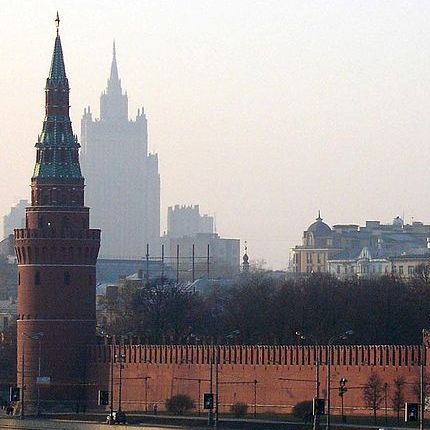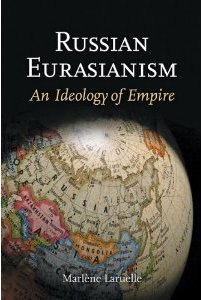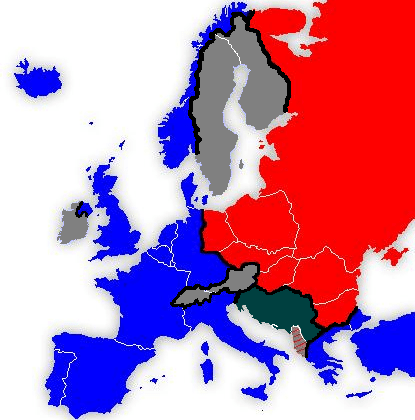(Part 1 of 2) The Military Industrial Commission’s Public Chamber is considering a report on the effectiveness of arms imports, international cooperation and technology transfer in Russia’s military industrial complex. The report is authored by Viktor Murakhovsky and Ruslan Aliev. The report addresses the history of Russian military imports, going back to World War I. It also looks at the comparative experience of other major military produces around the world, especially the US and France. It then plunges into the issues surrounding the Russian MOD’s recent forays into importing military technology, concluding with recommendations on how to make the process more effective. The entire report is quite long, 25 pages, so I’ll just focus on some of the highlights, including the conclusions and recommendations.
The history section has three conclusions, as follows:
- Russia has always been an active importer of military hardware (including from the US during WWII and from Warsaw Pact countries throughout the post-war period).
- Excessive dependence on imports at the start of the 20th century had a negative impact on national security and was one of the primary causes of Russia’s failures in World War I.
- During the industrialization period, the wide use of various forms of import (including samples, equipment, and technologies) allowed for the rapid development of domestic defense industry. This positive example should be taken into account during the current “new industrialization” period.
The comparative section lists the following conclusions:
- Military production around the world is becoming increasingly integrated, for both economic and political reasons.
- At the same time, foreign states retain firm control over the transfer of military technologies and production.
- Strong competition on the international arms market is partially caused by strong protectionist measures of leading states in military production.
- States that conduct independent foreign and domestic policies (Russia, China, Latin America) are subject to even stricter export controls by the governments of these states.
- Russia can derive practical benefit from following France’s example, both in terms of institutions and in terms of import policy.
- The European market for arms suggests the benefits of using offsets that allow countries to import military technology on more advantageous terms.
The report’s discussion of the French example is interesting. The authors highlight the responsibility placed on the French Defense Ministry for supporting national defense industry and note that this is done primarily through Europe-wide cooperation in military R&D and high tech projects. They focus on the annually updated 30 year plan for military needs and future procurement, developed by the main directorate for armaments. The technical characteristics of new military technology is formulated by the defense industry council, which is headed by the defense minister and includes the heads of the major defense enterprises. They highlight how French efforts to use defense procurement to support national R&D and the country’s industrial base are close to what Russia needs.
The rest of the report focuses on Russia’s recent history of importing military technology, with the first section addressing the institutional structure for concluding import deals. They note that reform of the various structures responsible for military procurement have been undergoing reform for the last decade. The common thread is that until quite recently none of these structures were able to function. First Rosoboronzakaz, then the Military Industrial Commission, and then Rosoboronpostavka were all launched with great fanfare but failed to turn into agencies that could develop a full-fledged procurement policy or to conduct it. Between 2007 and 2010, a procurement system was created, with the exception of the development of mechanisms to formulate a long-term procurement policy (which would establish the role of imported equipment in the procurement plan). The lack of a long-term policy has meant that each import decision has been made based on political considerations, rather than an overall vision of the Russian military’s needs and the domestic defense industry’s gaps in fulfilling those needs.
Here are the report’s conclusions on this section:
- Until 2000, there were no procedures in place for armaments procurement. The system remained incomplete through 2007.
- In 2010, procurement and supervision over procurement were both concentrated at the MOD. Without a planning mechanism, decisions were made based primarily on political considerations. The imbalance of power in favor of the MOD led to a political crisis surrounding the fulfillment of the State Armaments Program for 2011-2020.
- Importing various weapons systems is a completely acceptable scenario for Russia as long as the criteria are formulated in advance.
- Existing import deals do not meet the needs of the military and do not match the interests of the state’s industrial and technological policies.
- They key problem for the import of military equipment revolves around finding the optimal balance between the interests of the MOD and of defense industry.
- This requires the reconstruction of the existing system of requirements planning and military strategy formulation at the MOD.
- The government, probably through the Military Industrial Commission, should take on the role of analyzing the needs for future weapons systems and making decisions on whether to import them or produce them domestically.
In Part 2, I will discuss the parts of the report that examine specific examples of import deals, the risks of import dependence, and the overall conclusions.
Dmitry Gorenburg is a Senior Analyst at CNA blogging for PONARS Eurasia on military and security affairs in Russia and Eurasia. This comment is also available on Russian Military Reform.











